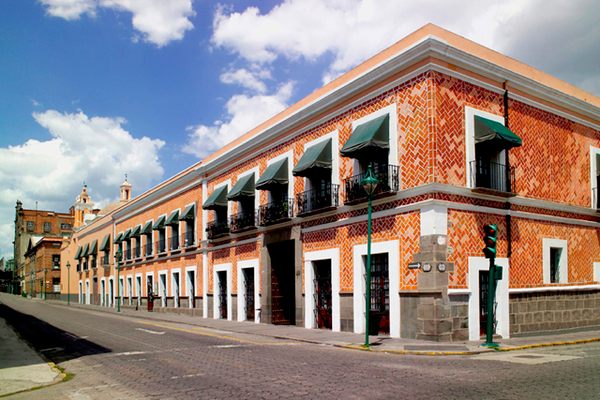About
As you walk through the galleries of the Teotihuacan exhibit in Mexico's National Museum of Anthropology, your eyes may be instantly drawn in the direction of a manifestly morbid sculpture.
In front of you stands a slate disk depicting a huge grinning skull, its sightless eyes glaring malevolently while a long protruding red tongue lolls from its maw. But perhaps most strangely of all, it is surrounded by what appears at first glance to be an elaborate halo, oddly reminiscent of a Catholic saint.
Although we can never know for sure what this enigmatic sculpture meant to the lost civilization of Teotihuacan, the location of its discovery was made might offer some clues as to its symbolic meaning.
In 1964, during an extensive archeological excavation of Teotihuacan, the disk was dug from the area directly in front of the famous Pyramid of the Sun, (the third-largest pyramid in the world) by a team of astonished archeologists. The discovery soon made international news and the sculpture was moved to the newly inaugurated National Museum of Anthropology, which had opened that year, to be displayed to the public.
Archeologists believe the sculpture's "halo" may allude to the setting and rising of the Sun, as the change from day into night was perceived by many Mesoamerican civilizations to be a cycle of the death and rebirth of the solar system. The symbolic meaning of the skull imagery itself is more difficult to identify, but it is thought that it may allude to the ritual practice of human sacrifice or be a representation of the Teotihuacan god of death, Mictlantecuhtli.
It also may be that this "disk of death" was somehow connected to human sacrifices made around the construction of the Pyramid of the Sun. Based on the presence and location of burial sites, it seems that the sacrifice of humans and animals was practiced during the construction of buildings. This occurred perhaps as offerings to appease the gods to secure both material prosperity and safety from the region's frequent earthquakes and volcanic eruptions.
Related Tags
Know Before You Go
The disk of death artifact is located in the National Museum of Anthropology in Chapultepec Park and can be found in Room 4, which holds the Teotihuacan collection. The museum is open from 9 a.m. to 7 p.m. every day except Thursdays, when it is closed to the public. The entrance fee is 51 pesos but if you are a Mexican national or a foreign resident of the country you may enter for free on Sundays.
Yucatan: Astronomy, Pyramids & Mayan Legends
Mayan legends, ancient craters, lost cities, and stunning constellations.
Book NowCommunity Contributors
Added By
Edited By
Published
December 14, 2018








































